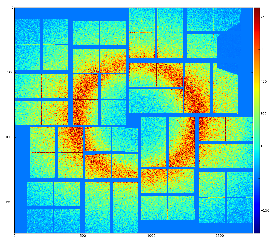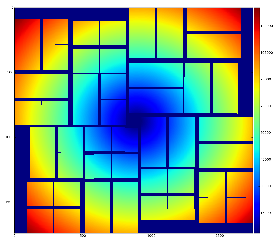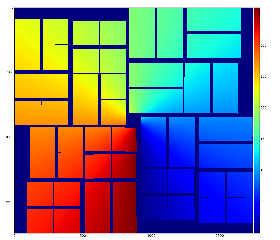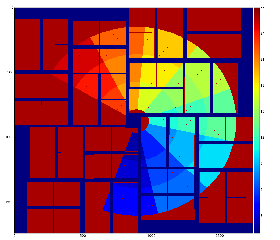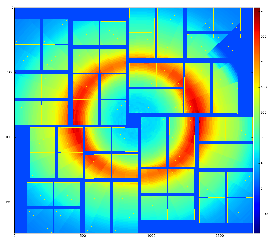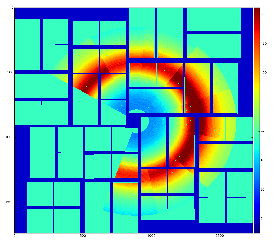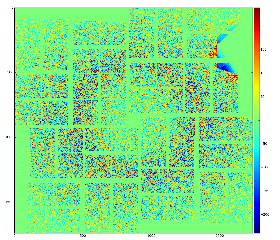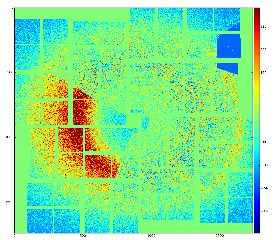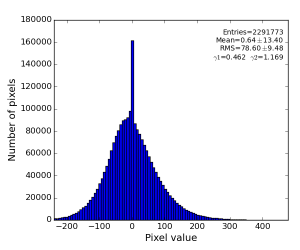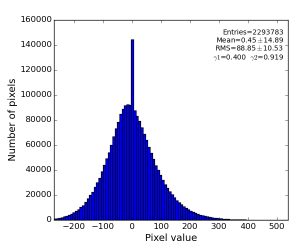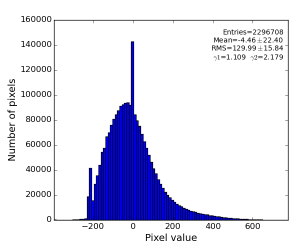Content
Code location
In LCLS software release code of the class RadialBkgd resides in the package pyimgalgos.
Auto-generated documentation for class RadialBkgd
Initialization
from pyimgalgos.RadialBkgd import RadialBkgd
rb = RadialBkgd(xarr, yarr, mask=None, radedges=None, nradbins=100, phiedges=(0,360), nphibins=32)
See parameters description in Auto-generated documentation for class RadialBkgd.
Algorithm
Intention
This algorithm is intended to subtract background from images with quasi-symmetric radial distribution of intensities. For example, water ring background:
To evaluate background in data, n-d array of data is split for 2-d bins in polar coordinate frame, total intensity and number of involved pixels are counted for each bin and converted to the average bin intensity.
Then this averaged intensity is per-pixel subtracted form data n-d array.
Description
Input per-pixel coordinates passed in numpy arrays xarr, yarr are used to evaluate per-pixel radius and polar angle:
Binning parameters radedges, nradbins, phiedges, nphibins are used to initialize 2-d bins using class HBins. Initialization with default binning parameters covers entire detector coordinate space.
Non-default binning, for example like
rbkg = RadialBkgd(X, Y, mask, nradbins=3, nphibins=8, phiedges=(-20, 240), radedges=(10000,80000))
defines angular pixel coordinates with correct offset relative to minimal angle,
and gives 3 bins in radial direction from 10mm to 80mm and 8 bins in angle from -20 to 240 degree:
Averaged background intensity for default and non-default binning cases (nphibins=8, nradbins=500):
Results
Background subtracted data for default (nradbins=100, nphibins=32) and non-default binning cases (nradbins=500, nphibins=1), and (nradbins=500, nphibins=8, phiedges=(-20, 240)):
- For good statistical background averaging 2-d bins should contain large number of pixels. Binning artifact in some places are seen in resulting image.
- Photon beam polarization effect is observed in the image with single angular bin (ring-shaped radial bins). One could eliminate this effect by modulation of the background sample using polarization correction.
References
